Update #4: Sunday, July 31, Frankfurt, Germany, 06:00
TAKEAWAY: We interview Robert Mills, author of the new book, A Practical Guide to Designing the Invisible. It is all about the importance of storytelling in his book. As he reminds us, storytelling “is growing in importance because with so many ways for people to receive content these days and with so many content creators we need to remember that at the centre of everything should be a story worth telling.” AND: Reviewing some Garcia Media print projects and how they fare today
A review of Garcia Media printed projects
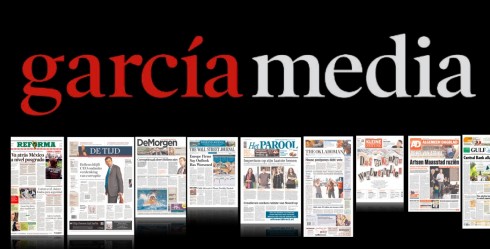
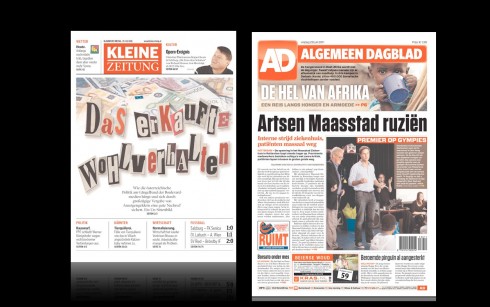
Austria, Netherlands
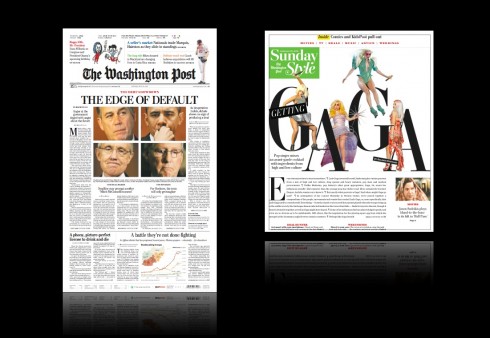
The Washington Post, USA
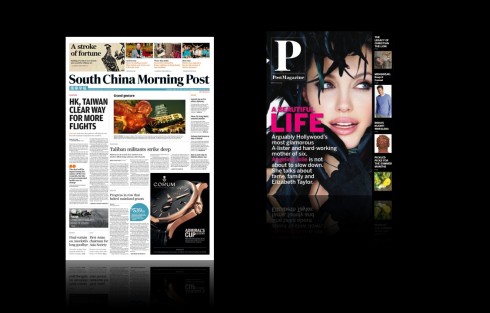
South China Morning Post, Hong Kong
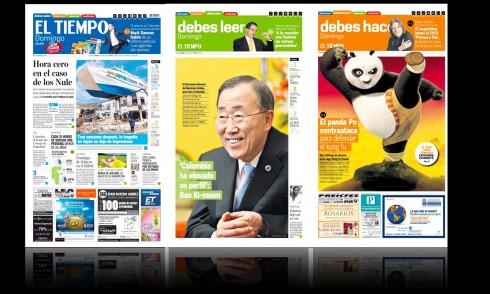
El Tiempo, Colombia
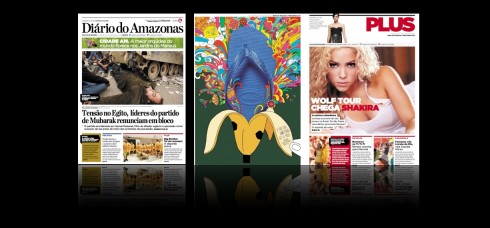
Diario do Amazonas, Brazil
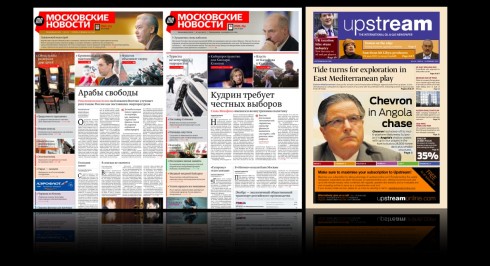
Russia, Norway
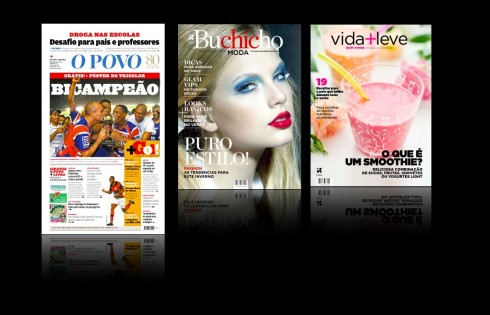
O Povo, Brazil

Italy’s Il Secolo XIX (front pages of last three days)
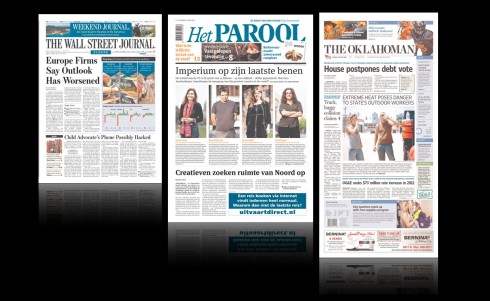
Belgium, Netherlands, USA

Romania Libera, Romania
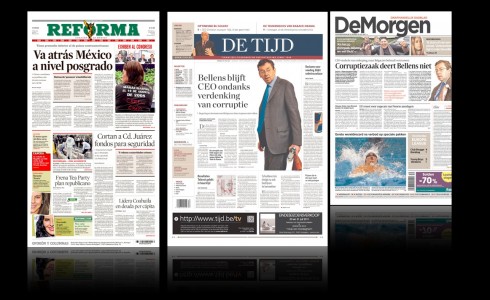
Mexico, Belgium
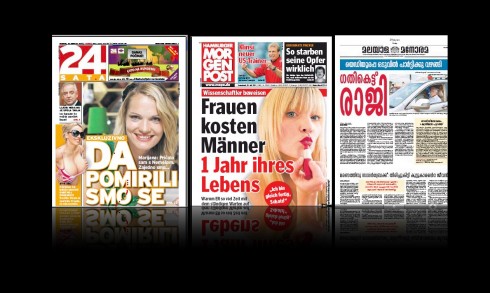
Croatia, Germany, India

Oman, Thailand
Friday, as I prepared to conduct a workshop for Media 24 attended exclusively by members of their newspaper titles, I thought it would be good to start with a review of how printed newspapers are doing today.
Although the workshops are all about the tablet, and how to take their newspapers to iPad app editions, which all of them will do in due time, I figured that I wanted to tell this group of editors, designers, copy editors that, indeed, printed newspapers thrive in many parts of the world, and that they adapt and grow. In some cases, new printed newspapers are born.
I always want to make it clear that my involvement, enthusiasm and, let’s say it, passion, for the iPad and the creation of apps, does not, in any way, take away from the pride we take in working with the rethinking of printed products which, as we constantly say, are going to continue to grow and to adapt.
So, in preparing, I turned to see how our Garcia Media projects did on Friday, and I collected these front pages of assorted projects, which I share here with you.
It is wonderful to turn to projects you have already completed and see them not just adhering to the rules that were set up at the time of a redesign, but also enhancing, improving, moving positively upwards with the concept. Here you go!
A Three-Minute (or Was That Five?) Interview with Robert Mills
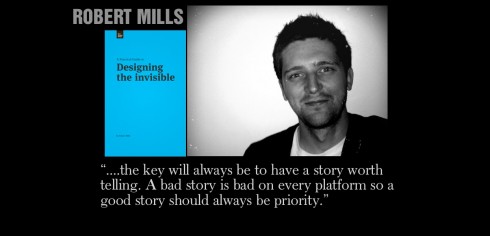
We first discovered Robert Mills through an excerpt from his new book, A Practical Guide to Designing the Invisible, and wrote about it here. .
Both Reed Reibstein, our Garcia Media art director/project manager, and I, became quite excited after reading that first chapter, so we decided to contact Rob Mills with some questions. He has taken time off a busy schedule to answer them for us, for which we are grateful. Here are the answers to our questions:
Mario: As I only have read an excerpt from your book, I do not know if you discuss storytelling and the tablets. What would you say is the role of storytelling in this new platform?
Storytelling plays a role on all platforms but regardless of what device audiences are experiencing the story on, the key will always be to have a story worth telling. A bad story is bad on every platform so a good story should always be priority.
That said, when we think of storytelling, most people will think of reading physical books and many people like to curl up in their favourite chairs to do so. When we think of the web, people associate that with sitting in a more formal position such as at a desk. For me the tablet bridges the gap between these two. You can have a digital storytelling experience but consumed in a more comfortable and relaxed way.
Mario: From the outline of your book I see that color plays a dominant role, as it should. Can you summarize for us how you see the role of color enhancing the storytelling process?
The book discusses many aspects in relation to storytelling such as imagery, tone of voice, icons, branding and indeed colour. Of those, colour is the one that most interests me but is also the one that is the most powerful. This is largely due to the different cultural meanings behind colours depending on which culture you discuss them in relation to. Black is a colour that symbolises mourning in many cultures but for others the colour of mourning is white.
Colours are an incredible storytelling device, particularly when you combine several. Red, white and blue together have strong political connotations and hint at specific ideologies. Individual colours also represent different political parties and of course colours can also evoke moods and communicate different emotions. Red has connotations of romance but also war. Yellow is said to induce headaches in adults when used on walls. All of this makes it obvious to me that not only do colours tell stories but they do so in such subliminal and powerful ways that we simply cannot ignore them when designing stories for the web.
Reed: Was there a certain designed object that you recall triggering your awareness of “invisible communication”?
I wouldn’t credit an object with that trigger but rather it all stems from my education when I started Media Studies. We never looked at the internet (way back then in 1996) but we did deconstruct films, adverts and other media texts. I was fascinated at how much the media communicate to us on an ‘invisible’ level and think many people don’t realise just how much of an influence the media has on their decisions.
As I moved into my Media Studies and Journalism degree I was still fascinated by this subject but started to look more at audiences, researching their behaviours. This is something which later became part of my day job at the BBC.
I started to gain a deeper understanding of the relationship between the media and audiences and that layer of invisible communication that happens between them. It wasn’t until I met Mark Boulton (of Mark Boulton Design) that I started to talk about the same theory and invisible communication but now in relation to the web.
Mario: One of the things that excites me about your book (having read only one chapter!) is the fact that it is a celebration of storytelling in its various manifestations. As someone who strongly believes that all we do in our business is organically centred around stories, I wonder if you agree that storytelling’s importance grows as we move more rapidly and decidedly into multi platform distribution of news and information.
Storytelling has always been important and that will never change. From carvings on the walls of caves to interactive user focused experiences on tablets, stories make the world go round. They help us preserve cultures, they bring people together, they cross cultures (and now platforms/devices) and they are an absolutely integral part of our world.
But I do agree that it is growing in importance because with so many ways for people to receive content these days and with so many content creators we need to remember that at the centre of everything should be a story worth telling. Then we need to determine who the target audience is and only then can we successfully decide how best to tell that story.
Audiences expect everything on demand these days. Programmes when they want, not dictated by tv schedule, news at any time of the day and most are able to access content on a multitude of devices at any time of the day so it would be easy for storytelling to get lost amongst that saturated culture. But it can’t and it won’t because everyone loves a good story. It’s just that we have so many more ways and opportunities to gain access to them these days.
Reed: What did the process of writing a book teach you about communicating a story?
It taught me that sometimes you have to edit even your finest of words. It taught me that storytelling isn’t always an organic process but rather many hours of research and planning may be needed. I also gained a greater respect for the old age adage of knowing your audience, and where possible, trying to understand them. You simply must know who you are communicating the story too.
Lastly I think the best stories are born when the writers are passionate about the story themselves. It isn’t enough to do a little research and throw some words onto a page. Storytelling is about crafting a beautiful tale that will hopefully make people think or feel different emotions or help them in their work, or educate them. But without passion the story will never be as good as it could be.
For the Gulf News Tablet: audience is up

As per Google Analytics, the Gulf News Tablet iPad traffic from June 27 to July 27 – has gone up by 210% to 10,714 visits.
“And this is all direct traffic. We now have readers from 99 countries – below is the table for the top 10 countries,” reports Tablet editor, Anupa Kurian
I worked closely with Anupa, as well as with Gulf News design director, Miguel Gomez, on the initial development of the Tablet. I asked Anupa for some details of why she thinks the Tablet has been so successful so soon:
Gulf News Tablet released its first app update in March. We’ve issued regular updates following that, with added functionality – gives the consumer a sense that it is dynamic and evolving. Initially, the downloads were not very high because we had zero promotion. About two months ago, we started online promotion with a small amount of print advertising. The downloads and usage got a boost. We saw a 210 per cent increase in visitors just this month. We’ve got 17,786 downloads over two months including July. It essentially shows that promotion is necessary but has to be combined with an extremely easy to use application and good content. It also adds statistical weight to the idea of editioning, as pioneered by Dr Garcia – Gulf News Tablet has two editions – and the value of curated content, specifically for the iPad. It is a lot of work and effort but an investment that has tangible return value – makes monetisation that much easier and achievable..
Previous blog posts about Gulf News Tablet:
Gulf News launches iPad edition: Case Study
https://garciamedia.com/blog/articles/gulf_news_launches_ipad_edition_case_study
Of interest:
Gulf News Launches iPad App
http://www.editorandpublisher.com/Online/Article/Gulf-News-Launches-iPad-App
Suggested weekend reads
– Economist plans expanded mobile app strategy
http://www.nma.co.uk/economist-plans-expanded-mobile-app-strategy/3028825.article
– UK: Most young men get their news online, says survey
http://www.mediaweek.co.uk/news/rss/1081799/young-men-news-online-says-survey/
– UK: Innovation is key to regional media success
http://www.nma.co.uk/opinion/industry-opinion/innovation-is-key-to-regional-media-success/3028772.article
– UK: Tabloid journalists, whoever they may be, get thumbs up in poll
http://www.guardian.co.uk/media/greenslade/2011/jul/26/polls-theindependent